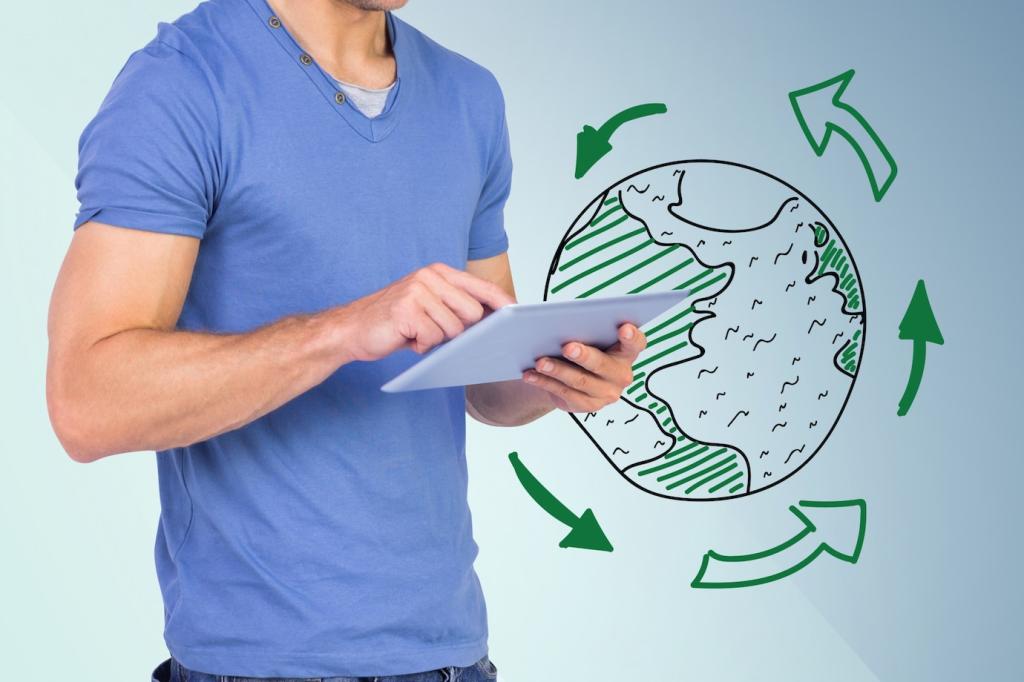Sustainable Consumption in Everyday Life
Sustainable consumption is an essential part of preserving the planet for future generations. It revolves around making mindful choices about what we buy, use, and dispose of in our routine activities. By adopting sustainable habits, individuals can significantly reduce their environmental impact, contribute to healthier communities, and enhance their personal well-being. This page delves into the foundational aspects of sustainable consumption and offers practical insights into applying these principles in daily life, empowering you to be a responsible consumer and active contributor to a more sustainable future.

Responsible Purchasing Habits
Evaluating Product Sustainability
When shopping, it’s important to assess a product’s entire lifecycle, from resource extraction and manufacturing processes to transportation, usage, and disposal. Are the materials renewable or recyclable? Was the manufacturing process energy-intensive or polluting? Is the packaging excessive or non-recyclable? Considering these factors can help you determine whether a product aligns with sustainable values. By making these evaluations routine, consumers ensure their purchases reward responsible producers and discourage environmentally harmful practices.
Supporting Ethical and Local Businesses
Choosing to support ethical and local businesses can make a significant difference in promoting sustainability. Local businesses typically have shorter supply chains, which reduce transportation emissions and support the local economy. Meanwhile, companies with ethical practices invest in fair labor, environmentally friendly sourcing, and transparent operations. Researching brand values and certifications, such as Fair Trade or B Corp, fosters trust that your money supports organizations aligned with your commitment to sustainability.
Reducing Impulse Buying
Impulse buying often results in unnecessary purchases, increased waste, and overconsumption, all of which can harm the environment. Being mindful of your actual needs before shopping and setting personal guidelines can help curb these tendencies. Waiting before making a purchase, considering a product’s lifespan, or writing out a shopping list may seem simple, but these steps encourage thoughtful choices. Ultimately, reducing impulse buying contributes to a more intentional lifestyle that values quality, functionality, and sustainability over fleeting desires.
Conscious Food Choices
Incorporating more plant-based meals into your routine is an effective way to lower your environmental impact. Animal agriculture is a leading driver of deforestation, water consumption, and greenhouse gas emissions. Shifting towards plant-based foods, even a few times a week, significantly reduces your carbon footprint and reliance on resource-intensive animal products. Besides environmental benefits, plant-based diets often support better health outcomes. Making this shift can be as simple as experimenting with new recipes, trying plant-based alternatives, and exploring the diverse flavors and nutritional profiles that come with vegetarian and vegan meals.

Energy and Resource Conservation
Cutting unnecessary energy use in your home is both straightforward and impactful. Turning off lights when leaving a room, unplugging electronics when not in use, and using energy-efficient appliances can collectively reduce overall consumption. Adjusting thermostats to avoid overcooling or overheating, maximizing natural light, and insulating your home further improve energy efficiency. These steps not only lower your utility bills but also decrease the demand for fossil fuel-generated electricity, reducing your household’s carbon footprint.
Sustainable Transportation
Opting for non-motorized transport, such as walking or cycling, is the most sustainable way to commute short distances. These modes produce zero emissions, reduce your carbon footprint, and contribute to improved personal health. For longer journeys, public transportation or shared mobility services are preferable over single-occupancy vehicle use. Supporting initiatives for better bike lanes, pedestrian infrastructure, and accessible transit services can further enhance community mobility and sustainability.

Mindful Use and Maintenance of Possessions
Choosing durable, high-quality goods over cheap, disposable alternatives is a key aspect of sustainable consumption. Well-made items often last longer, perform better, and require less frequent replacement. Investing in quality reduces long-term costs and waste, as fewer products end up in landfills. Consider the materials, craftsmanship, and after-sales support when making purchases. Over time, this focus on longevity fosters a mindset that values maintaining and cherishing possessions rather than treating them as quickly disposable.
Repairing broken items and upcycling materials for new uses are powerful ways to avoid unnecessary waste. From mending clothes to refurbishing electronics and furniture, many items can be restored with a bit of time and creativity. Communities are increasingly supporting repair initiatives through workshops and tool libraries, making it easier to learn these skills. Upcycling—transforming products or materials into something of higher value—stimulates innovation and personal expression while reducing the demand for new resources.
When possessions are no longer needed, donating or reselling them extends their lifespan and benefits others. Thrift stores, online marketplaces, and local charities provide outlets for unwanted goods, ensuring they find new use rather than contributing to landfill waste. Donating supports community organizations and helps those in need, while reselling can recoup value for the original owner. Adopting a “reuse-first” approach creates a culture of sharing and resourcefulness that aligns with sustainable living values.

Smart Home Solutions for Conservation
Smart home technologies make it easier to monitor and optimize resource use. Programmable thermostats, sensor-based lighting, and water-saving devices automatically reduce consumption by adapting to your habits and needs. Energy usage monitors provide real-time data, encouraging households to adopt more efficient behaviors. These innovations simplify conservation while maintaining comfort and convenience, making home sustainability less of a burden and more of an integrated lifestyle.
Apps for Mindful Shopping and Tracking
Numerous apps empower consumers to make informed, sustainable choices when shopping. These platforms provide information about product origins, ethical practices, environmental impact, and ingredient safety. Some apps allow users to track spending, waste, or carbon footprints, making it easier to set and achieve sustainability goals. With transparency at their fingertips, consumers can bypass greenwashing and support brands that align with their values, fostering continuous improvement in consumption habits.

